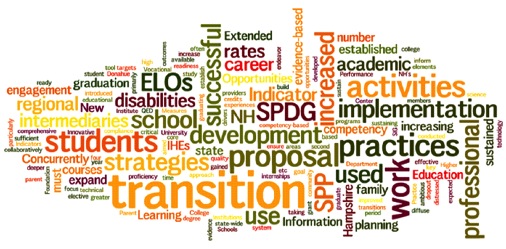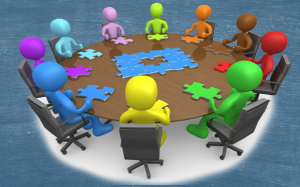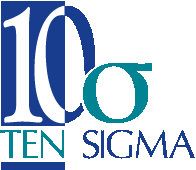
06 May What does Transition Mean?
Even though it's been many years since the transition planning process was mandated by the Individuals with Disabilities Education Act (IDEA 2004), some parents and general education teachers may not be aware that this law requires schools to help their students during the transition process.
IDEA requires that a statement of the student’s transition assessments, goals, and services be included within a child’s Individualized Education Plan (IEP) before he/she turns 16. It is beneficial to remember that an IEP is not an ends in itself, it is a means to an ends–called adult life.
When Should Transition Planning Begin?
Statistics gathered by Education attorneys David J. Berney and Jennifer Y. Sang, regarding why special-education students need strong transition planning, illustrate that students with intellectual disabilities have only a 40 percent chance of completing high school. The chances that they will enroll in post-secondary education are around 30 percent, and their odds of attending a four-year college are just 5 percent. They also have only a 30-40 percent chance of obtaining stable gainful employment two to four years out of high school. These statistics amplify why it is so important to engage students in thinking about AND planning for life after high school.
Transition planning is one of the most important and beneficial functions of having an IEP for students with special needs. Transition meetings are commonly held to discuss movement from one school level to another, or even from one job or program to another as a student ages. Simply being aware that teenagers need guidance in order to transition successfully from high school to adulthood isn’t enough. By the age of 16, schools must have distinct steps outlined and taken in order to prepare students for employment, education/training, and independent living. Without proper guidance from the IEP team (school professionals, parents, medical professionals, etc.) students who receive services for a disability often struggle in high school and beyond.
Transition planning provided by professionals and outside community resources, are expected to be tailored to a student’s strengths and goals, based on previous student assessments (informal, formal and causal assessments), while providing him or her options for future planning. Overall effective Transition planning better prepares students who receive special education service to make a successful transition to adult life.
Transition IEP Team
The Transition process should begin with a teacher informing the student about the purpose of Transition planning in their life, in the IEP, and the how the IEP team will help them in the process.
- Students need to be actively engaged in exploring their options and related to employment, education/training, and independent living.
- The IEP team needs to assess the student's strengths and needs in both academic and functional areas.
- Based on student exploration and consideration of their strengths and needs, the team will work with the students to assist them in identifying age-appropriate and measurable postsecondary goals.
- Identify services for the students that are individualized and designed to build on strengths while identifying needed accommodations and/or modifications.
- The IEP team will need to define each Transition activity on the IEP, while maintaining clear responsibility for each activity and outlining when each activity will begin and end and who will assist the student (if necessary and/or applicable).

Student Centered Approach
It is important that the IEP team takes a series of steps to actively involve students with disabilities in planning and preparing for adult life. As a result, students need to be engaged in the Transition process before, during, and after their IEP meetings and be taught/involved in the following:
- The purpose and benefits of a Transition plan and their IEP;
- The procedures of an IEP meeting, including who is there and why;
- The importance of the student’s involvement and input;
- How to describe their own strengths and challenges (academic and non-academic);
- How to put their vision for their own future into words;
- How to participate in exploring and identifying their own goals; and
- How to self-advocate for the kinds of supports they will need to meet their planned goals.
Although active student participation will look different for every individual, the overall goal is for students to take on as much ownership as possible throughout the Transition process because they are supposed to be preparing for being responsible for themselves as adults.
Parental Involvement
Parental involvement within the transition process is essential since only the parent accompanies their child throughout these important school and life transitions. The parents' input at each Transition stage can ensure that appropriate services and supports are in place and increase the chances of the student's success in the new program.
A Special Education Law Blog dated February 23, 2017 by Charles Fox, an Illinois attorney and a parent of child with special needs, had an interesting post discussing the 2017 Comprehensive Transition Guide from the Office of Special Education and Rehabilitative Services (OSERS). Fox highlights the fact that parents should be aware of this guide prior to their next Transition meeting and that this guide will provide both the legal and conceptual framework for continued and improved parental advocacy for their child.

Transfer of Rights and the Age of Majority
The Transfer of Rights is clearly defined within IDEA 2004. This law requires that at least one year before the student reaches the “Age of Majority” and legally becomes an adult. The school must provide the following:
- Alert the student of their new, upcoming responsibilities
- Provide notices of upcoming meetings to the student as well as the parents, while all other notices will go only to the student.
Summary of Performance
The Summary of Performance (SOP) is a document the school must provide before the student graduates from high school or turns 22 years old.
- It summarizes academic and functional performance levels and transition needs at the time the student completes school.
- It must be specific, meaningful, and written so the student can understand it.
- It must make recommendations about how to help the student meet his or her post-secondary goals.
- Lastly, the SOP should be reviewed at the student’s final Transition planning meeting.

Transition Tuesday and Other Transition Resources
At Ten Sigma, our goal is to partner with educators and parents to transform the Transition process. To help accomplish this goal, we have created several important Transition resources including:
- Transition Tuesday – click here to get FREE access to over 100 Transition training videos. Each episode has valuable bonus resources on the topic.
- Transition Assessment Surveys – click here to learn more about our assessment surveys, which focus on student life skill strengths and needs.
- Transition Rubrics – click here to learn more about our Transition rubrics, which break down important skills into measurable criteria for measuring and reporting student growth.
- STEP Transition Program – click here to learn more about how S.T.E.P. (Student Transition Engagement Program) guides students and parents to be actively involved in the Transition process before, during, and after IEP meetings.
- Starting Line Student Transition Curriculum – click here to learn more about the Starting Line student workbooks (and PDF licenses) that guide students through assessment, activities, and tasks that ultimately guide them in exploring, identifying, and reaching meaningful postsecondary goals.



